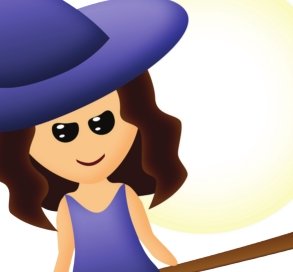“What I have done at Halloween is that I have invited my ancestors to come for the evening. I don’t know that I would like everyone,” she laughed, “so I try to be specific. The idea is that they know that they’re welcome. I set up an altar where I have photographs and candles and things like that. I take a bell, I ring it and I call them. I let them know they’re welcome.”
The reason that Barrett can do this on Halloween is because in her faith, Dianic Witchcraft, the belief holds that the ethereal and corporeal barrier between worlds becomes very thin. In simpler terms, on that day, the spirit world and the physical realm are especially easy to pass through — this also means that you could have a ghost at your doorstep at some point in the night. And Barrett isn’t the only one to believe this: the belief is an ancient Pagan one that goes back centuries.
“It survives in the children today going around, maybe they’re [dressed as] Batman or Spider-Man,” Barret said.
Common or not, trick-or-treating is arguably one of the most misunderstood Halloween traditions. The practice is believed to have grown out of the Celtic holiday, Samhain (pronounced sawwin).
“This holiday marks the end of summer and it really is the end of the old year, the agricultural year. So, what Halloween really is, is the first day of winter,” Barrett said. “What that meant to rural peoples is that certain things had to be done by this holiday. The animals that would have been grazing further away would be brought closer to home. Animals that would not make it through the winter or were older, and would be slaughtered for meat.”
The historically Pagan holiday was also a time for the dead to walk the earth, and offerings had to be made. Over time, as society distanced itself from agricultural tradition, many customs adapted to suit new, metropolitan needs. Bonfires, once used to ward off angry spirits, turned to jack-o’-lanterns, and soul cakes, tiny baked goods to feed the hungry dead, turned to sweets.
In the end, not even the Pagan stuck. Christianity had a hand in that when Pope Gregory III declared Nov. 1 to be All Hallows’ Day or All Saints’ Day to combat Pagan traditions. Over time, Oct. 31, or All Hallows’ Eve, morphed into the familiar term, Halloween.
So, even though Barrett is following a historically agricultural calendar, one that divides the year into six-week periods, the intention is a different one.
“We celebrate every cycle of woman’s life, and it is honored through the year as though the year is really a dancing woman. And she changes through the year. This part of the year, she has aged, she is post-menopausal. So, we would honor women who are post-menopausal as part of our rituals, our cycle,” Barrett said.
Barrett said that this Halloween woman is one that likely everyone has seen in October: the witch.
“We see her in every single store window looking at this ugly depiction of a woman. That is something that people largely don’t know.
Even when you talk about the skin color of people, her green color is really symbolic of Mediterranean or Middle Eastern; olive, ”Barrett said, pointing out that many of a witch’s stereotypical attributes were historicall y shared by disenfranchised people.
“Think about what was happening during the Inquisition. The targets were Jews, they were other Christians that did not believe in the precise doctrine of the church, they were homosexual men and women, gypsies — you’re talking about anyone who did not ‘belong,’” Barrett said. “The one who got to decide that was the Catholic church at the time.”
But Barrett wants to make something very clear, just because she’s a witch doesn’t mean her goals are negative ones, and that Satanism and witchcraft are two separate practices.
“There’s no concept of the devil in witchcraft, it does not exist. If you are a Satanist, it’s an offshoot of Christianity. If you believe in the devil, an adversary of God, then you’re still in that same cosmology,” Barrett said. “They took the God of the witches, and they made him into the Christian devil and that’s where there is a lot of misunderstanding.”
And although she does worship a Goddess, her faith is more female-centered; it’s more of the practice of worshiping feminine characteristics in the world, rather than praying to an actual holy person.
“Wiccan religion is what you would call the religion of witchcraft. The tradition that I’m a part of is not generally practiced. Most people who consider themselves Wiccan, they celebrate and honor who we call the Goddess, what is the female form of nature. My drive to what we are calling Paganism, another way to talk about it would be earth-based spirituality, is that I’m a nature lover. A tree hugger,” Barrett laughed.
So, on Oct. 31, along with inviting her family to visit — not necessarily living — Barrett will also be giving thanks to the earth as many did in ancient times.
“You had to be on good terms,” Barrett said. “So, I’m giving thanks and offering to the land, because without that relationship, and without that being in good favor, things happen.”
Support City Pulse - Donate Today!
Comments
No comments on this item Please log in to comment by clicking here